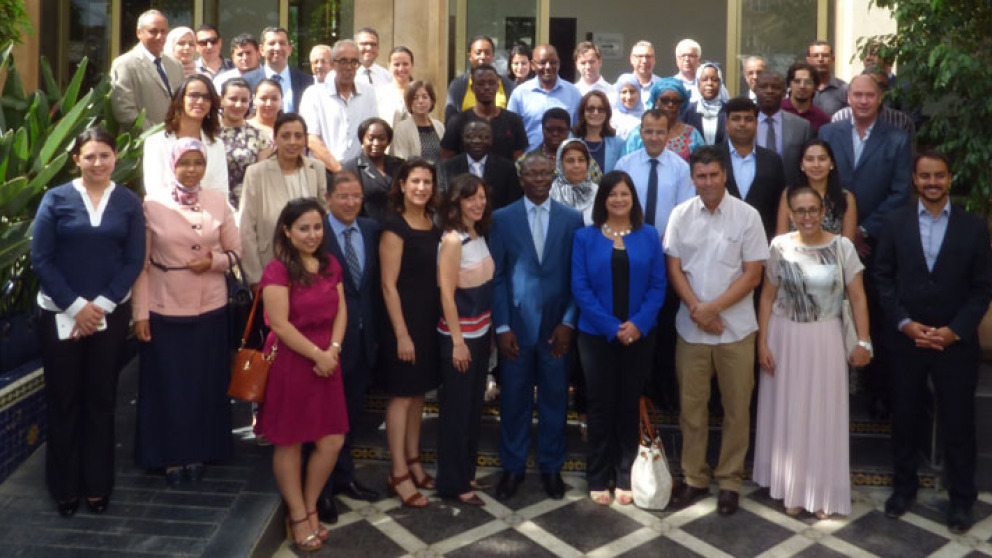Mitigating Climate Change, Brick by Brick
06.10.2016

Nearly one year ago, in December 2015, 195 nations adopted the Paris Agreement, a global, legally binding treaty for keeping global climate change “well below 2°C”, pursuing efforts to limit warming to 1.5°C. Preparations are underway for this year’s UN Climate Conference, COP22, which will take place from 7-18 November in Marrakesh, Morocco. Thanks to a recent surge in ratifications, the Paris Agreement stands a high chance of entering into force this year. COP22 will be crucial to help operationalize this ambitious new climate treaty and there is a long list of tasks yet to be completed before the first meeting of the treaty Parties. The success of the treaty greatly hinges on the effective implementation of the so-called nationally determined contributions (NDCs) submitted by state parties. Recent estimates suggest that although the preliminary contributions (INDCs) submitted to date cover 95% of global greenhouse gas emissions, current levels of ambition put us on a path of 2.6–3.1°C median warming, overshooting the 2°C, let alone 1.5°C temperature goals.
The brick sector is a major black carbon emitter
When people think about climate change mitigation, brick production is probably not one of the first things that comes to mind. And that’s fair enough: the number one priority for stabilizing long-term climate is a radical shift of the global energy system away from fossil fuels. However, when it comes to taking climate action, every little bit counts – and it turns out that the bricks sector isn’t so little. In fact, reducing black carbon (BC) from traditional brick production was identified by the United Nations Environmental Program (UNEP) as one of 16 global priority measures that would both save lives and reduce near-term climate warming. Black carbon is the main component of soot and acts as both a climate warmer and an air pollutant that is harmful to human health and ecosystems.
With this background and motivation, IASS recently co-organized and participated in a workshop on cleaner brick production for Africa held in Rabat, Morocco from 1-2 September 2016. The two-day workshop formed part of IASS’s work as a Lead Partner in the Brick Production Initiative of the Climate and Clean Air Coalition (CCAC) and offered an exciting opportunity to promote the work of the CCAC to environmental policy makers in the African region in the lead up to COP22.
CCAC initiative identifies strategies for a cleaner brick production
The CCAC is a voluntary international partnership made up of over 100 states, non-state actors and intergovernmental organizations taking action to reduce so-called short-lived climate-forcing pollutants (SLCPs), including black carbon. The regional workshop was hosted by the Ministry of Environment of Morocco, a Country Partner in the CCAC Brick Production Initiative, and aimed to increase awareness of the impacts of SLCP emissions from the brick sector as well as identify the benefits of and strategies for reducing said emissions. We had attendance from over 50 representatives from more than 10 different countries from the African region including policy makers from their respective environment ministries, health ministries, representatives from brick industry associations, and a good number of technical experts from Africa, Asia, and Latin America.
Over the two days the workshop provided participants with knowledge on SLCPs, their impacts on human health and climate, as well as the benefits of mitigating in particular black carbon from brick production. Experiences from our CCAC Bricks Initiative activities from Latin America and Asia were also shared. Through several lively discussions, participants shared their insights into the needs and priorities of countries from the African region with a view to stepping up efforts to reduce SLCPs from their brick sectors.
The Paris Agreement as an opportunity for the brick sector
Several recommendations were identified to further engage African countries in the activities of the CCAC Brick Production Initiative and to create linkages with the upcoming COP22 in Marrakesh, to name just a few:
- Increasing awareness on the environmental and health impacts of SLCPs from brick production and the benefits of mitigation;
- Taking the Paris Agreement as an opportunity for countries to integrate measures to mitigate SLCPs from the brick sector in their NDCs
- Improving black carbon inventories from the brick sector across the region
- Promoting technology transfer and financial aid for reducing SLCPs from the brick sector
Indeed, the reduction of SLCPs, including black carbon from brick production, will play an ever more important role in the global fight against climate change. The newly adopted Paris Agreement aims to limit global average temperature increase to “well below 2°C” and pursue efforts to limit it to 1.5°C. It is becoming increasingly clear among the scientific community that conventional mitigation efforts as presently laid out in national climate plans (or NDCs) will not suffice to keep us within the 2°C let alone the 1.5°C limit. As a result, there is a need for fast actions that can help reduce global warming over the short term. Based on findings from UNEP and the WMO, the CCAC estimates that comprehensive implementation of measures to reduce SLCPs could result in 0.6°C of avoided global warming by 2050 (UNEP & WMO 2011). At the same time, SLCP mitigation should be considered as complementary action to be pursued alongside conventional mitigation of long-lived greenhouse gases. Against this background, initiatives such as this regional workshop are important to further expand the global reach of SLCP reduction activities, which the IASS will continue to actively support via its partnership with the CCAC.
--
- For more information on the CCAC in general and the CCAC Brick Production Initiative in particular see here: http://www.ccacoalition.org/en/initiatives/bricks
- A press release on the workshop can be found here: http://www.ccacoalition.org/en/news/morocco-hosts-first-regional-africa-meeting-reducing-slcps-brick-sector AND http://www.maroc.ma/fr/actualites/mme-el-haite-le-maroc-engage-garantir-aux-citoyens-le-droit-lacces-un-environnement-sain (French)
- See also: http://www.iass-potsdam.de/en/research/air-quality-context-global-change/elias/climate-and-clean-air-coalition-ccac
